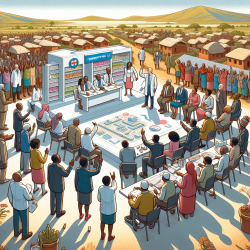Introduction
In the realm of speech-language pathology, data-driven decisions are paramount to crafting effective interventions. As practitioners, we constantly seek innovative strategies to enhance our practice and outcomes for children. The recent study on adapting the Community Paramedicine at Clinic (CP@clinic) program for a remote First Nation community offers valuable insights that can be translated into our field. This blog explores how the findings from this study can inspire speech-language pathologists to improve their skills and encourage further research.
Understanding the CP@clinic Program
The CP@clinic program is a community-based initiative aimed at addressing healthcare gaps in remote communities. It involves paramedics conducting health assessments, managing chronic diseases, and promoting health education. The study by Keenan et al. (2023) highlights the program's adaptation to a remote First Nation community, emphasizing the importance of cultural sensitivity, community engagement, and leveraging local resources.
Lessons for Speech-Language Pathologists
- Cultural Sensitivity: Just as the CP@clinic program adapts to the cultural context of the community, speech-language pathologists must tailor interventions to the cultural and linguistic backgrounds of the children they serve. Understanding and respecting cultural nuances can significantly enhance the effectiveness of therapy.
- Community Engagement: The success of the CP@clinic program hinges on community involvement. Similarly, engaging families and caregivers in the therapeutic process is crucial. Building strong relationships with the child's support network can foster a more holistic approach to speech-language development.
- Resource Utilization: The study underscores the importance of leveraging community assets. In speech-language pathology, this translates to utilizing available resources such as technology, local support groups, and educational materials to support therapy goals.
Encouraging Further Research
The study's findings highlight the need for ongoing research to refine and adapt programs to specific community needs. Speech-language pathologists can draw inspiration from this approach by conducting research within their own practice settings. By systematically collecting and analyzing data, practitioners can identify patterns, assess intervention effectiveness, and make informed decisions to enhance outcomes for children.
Conclusion
The adaptation of the CP@clinic program to a remote First Nation community offers valuable insights for speech-language pathologists. By embracing cultural sensitivity, community engagement, and resource utilization, practitioners can improve their skills and outcomes for children. Furthermore, the study serves as a reminder of the importance of data-driven decisions and encourages further research to advance the field.
To read the original research paper, please follow this link: Adapting the Community Paramedicine at Clinic (CP@clinic) program to a remote northern first nation community: a qualitative study of community members’ and local health care providers’ views.










